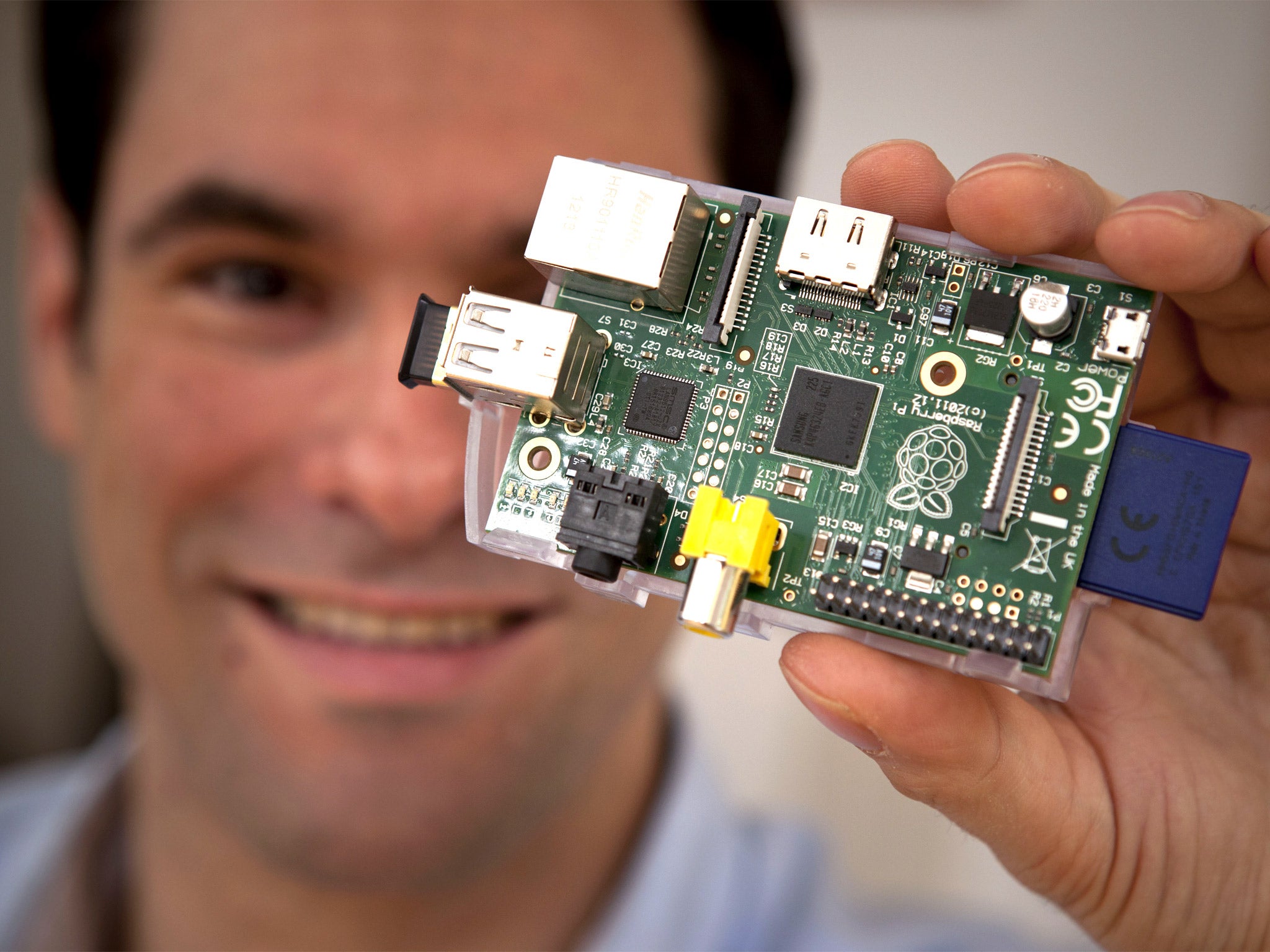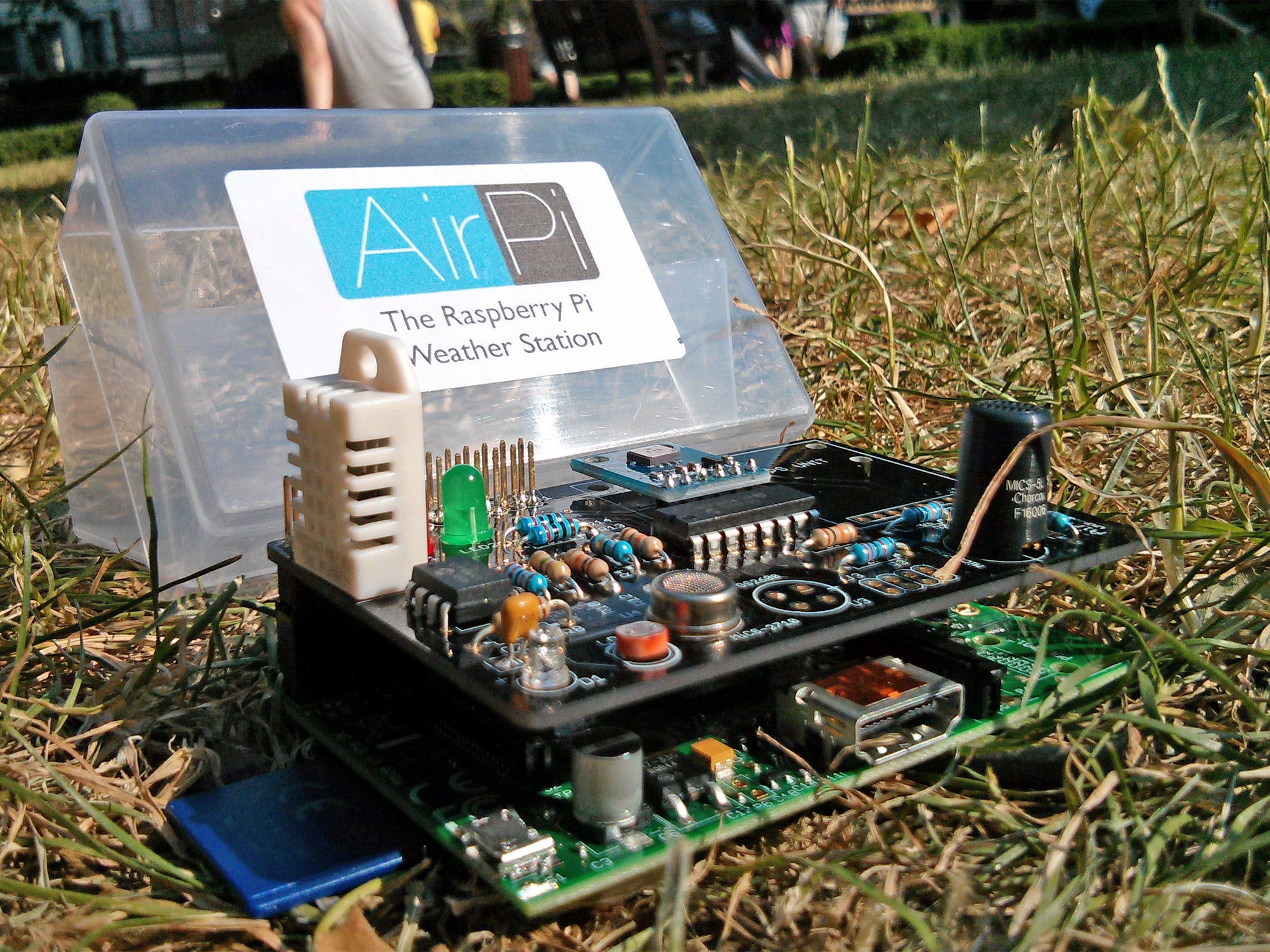The Independent's journalism is supported by our readers. When you purchase through links on our site, we may earn commission.
Life with Pi: The Raspberry Pi costs just £32 but can do just about anything - if you put the hours in
The slender piece of circuit board was designed to teach kids to code, but the rest of the tech world has also gone wild for it thanks to its knock-down price, low power consumption and its astonishing range of applications

Your support helps us to tell the story
This election is still a dead heat, according to most polls. In a fight with such wafer-thin margins, we need reporters on the ground talking to the people Trump and Harris are courting. Your support allows us to keep sending journalists to the story.
The Independent is trusted by 27 million Americans from across the entire political spectrum every month. Unlike many other quality news outlets, we choose not to lock you out of our reporting and analysis with paywalls. But quality journalism must still be paid for.
Help us keep bring these critical stories to light. Your support makes all the difference.
How does a slender piece of circuit board become a global phenomenon, selling more than 1 million units in its first year? The Raspberry Pi may have been designed to teach kids to code, but the rest of the tech world has also gone wild for it, with its knock-down price – £32 for a miniature, bare-bones computer – low power consumption and its astonishing range of applications.
Despite its low cost, the Pi has everything a basic computer needs – processor, graphics and memory. And because it's also highly programmable, a huge online community has sprung up, customising their Pis and proudly documenting the results.
Enthusiasts have harnessed the Pi to power voice-activated robots (the RaPiRo), play musical instruments (the BeetBox), get sozzled with Pi-controlled beer brewing (BrewPi) and even control high-altitude balloons, beaming photos back from near-space (Pi in the Sky).
Of course it still is, essentially, a £32 credit-crunch PC and if you hook the Pi up to a keyboard and television you can just settle for surfing the web, playing games (there's enough horsepower to trump the PlayStation 2) and even watching films. And that's exactly what I tried for my first Raspberry Pi project: creating a low-cost media centre via the Wi-Fi-connected Pi.
Unlike Sky TV, say, this credit card-sized board doesn't work straight out of the box. You'll need another computer to download the Pi's Linux operating system to an SD card, before loading that onto the Pi itself. Thanks to the online tutorials, getting up and running takes little pre-knowledge – just time, patience and care: my first Raspberry Pi broke when the slot holding the memory card in place snapped, rendering it lifeless.
Two Pis and several days later, my media centre is up and running, and I'm watching catch-up television from the likes of the BBC's iPlayer add-on, and streaming films stored on my desktop computer's hard drive. It's easy to use and brilliantly effective, though for just streaming online content it's not as cheap as Google's new £22 Chromecast TV dongle (though the Pi has access to far more content).
Flushed from the (eventual) success of my first project, I strip the Pi back down and prepare it for a proper programing session – exactly what the Pi was designed for. I start with the basics, wiring up a few LEDs to the Pi, and then start writing a program (grabbed from another online tutorial), to get them to switch on and off in a pattern: all easier said than done.
Wiring them up with each accompanying resistor is like threading spaghetti through a sieve, and several hours and 17 lines of code later, I'm still struggling, as only half of the LEDs I have are blinking. I give up on the idea – creating my own R2-D2 has never seemed so far off – and switch the Pi back to media-playing duties.
Which tells you something about the audience for the Pi: it's a great proposition for dedicated enthusiasts, and a tasty bit of kit for teaching kids to code. But the average user could be put off by the constant tinkering required to get the most out of it. This hasn't, of course, held back the million or so enthusiasts out there, and if you're looking to see what a bit of perseverance, skill and 100 lines of code can achieve, look no further than the ingenious individuals on this page.
For more information visit raspberrypi.org. This Pi was provided by official suppliers RS components – uk.rs-online.com

1. Shota Ishiwatari, 29
Project: RAPIRO humanoid robot
Key Ingredients
1 x Pi, 1 x Pi camera
12 x servo motors
1 x distance sendor
2 x speakers
1 x plastic robot chassis
It was only a matter of time until someone used the Pi to make a programmable robot, and this cute but highly functional design from Japanese entrepreneur Ishiwatari looks the best so far. Creating a 3D-printed chassis, he's slotted the Pi into the head section, used servos (devices that correct the performance of a mechanism) to control the hands and feet, and a motion sensor to allow the Rapiro to carry out tasks such as guarding your home and even doing a little light house work with its mini-duster. But don't fire your cleaner just yet: at only 10 inches it can't reach very high. rapiro.com

2. Scott Garner, 33
Project: BeetBox musical instrument
Key Ingredients
1 x Pi, 6 x beetroots
1 x piece of hardwood
1 x capacitive touch sensor
1 x amplifier
1 x speaker
How do you turn six root vegetables into a drum kit? Speak to American artist and NYU Masters student Scott Garner, who's brilliant but bonkers device involves linking a Pi to a touch sensor to determine when one of six beetroots is being tapped by a user. The Pi monitors when a beetroot has been touched, triggering a pre-recorded drum beat which is outputted to the device's speaker. "At first I thought it was a silly project," says Garner, "but I was delighted and surprised when people kept coming to play on it." Cue a gleeful cacophony of rock 'n' roll rhythms. Beatles riffs work well, though high-tempo drum 'n' bass fans might find the Pi's timelag a deal breaker. http://scott.j38.net

3. Cameron Weibe, 29
Project: DIGITAL ART FRAME
Key Ingredients
1 x Pi
1 x wooden picture frame
1 x slim LCD display
Ripping an existing painting out of a favourite fine-art frame and mounting a high-definition LCD screen inside it instead (using duct tape to secure the screen to the frame) was the genius, but simple, idea of Canadian artist and graphic designer Weibe. Programming a basic routine into his Pi computer hidden behind it, Weibe managed to create a code that continuously pulled in the 50 most popular images each day from art website deviantART, providing his visitors a smorgasbord of rotating works from this huge collective of online artists.

4. Dave Akerman, 53
Project: Pi in the sky balloon camera
Key Ingredients
1 x helium balloon
1 x Pi
1 x GPS chip
1 x radio transmitter
1 x Pi camera add-on
4 x lithium batteries
Sending a Pi into near-space is a lofty achievement in itself, but that wasn't sufficient for computer programmer and amateur high-altitude balloonist David Ackerman. After breaking the UK amateur record for an unmanned balloon flight in 2011, Ackerman subsequently added a Pi on board, using it to transmit back stunning live images of the earth 25 miles above South-west England, using the Pi's add-on camera. "Receiving those live images, I had this feeling of being up there with it," he says. The fiddly bit? "It took many hours to write the code for this," says Ackerman, who needed to combine lengthy routines to communicate with each component, plus write an algorithm to help the Pi decide which were the best photos to transmit back to earth. daveakerman.com

5. Alyssa Dayan 16 & Tom Hartley, 17
Project: AirPi climate sensor
Key Ingredients
1 x Pi
1 x humidity and temperature sensor
1 x air pressure sensor
1 x general air-quality sensor, carbon-monoxide sensor
1 x nitrogen-dioxide sensor
1 x school chemistry lab to test and calibrate sensor levels
How do we know that today's kids care about the environment? Check out A-level students Dayan and Hartley, who have put together a fully functional weather and air-quality device. Connecting a series of pollution and climate sensors to the Pi and writing a Python programme to recognise and track these levels, the duo then uploaded the results onto a website that others can add their local data, too. Soon, enthusiasts from around the world were using the instructions on Hartley and Dayan's website to build their own AirPi's, and adding their data to the duo's nascent weather network. "Out of the blue people from places such as Ho Chi Min City, Vietnam, were contacting us to join up," says Dayan. http://airpi.es
Join our commenting forum
Join thought-provoking conversations, follow other Independent readers and see their replies
Comments